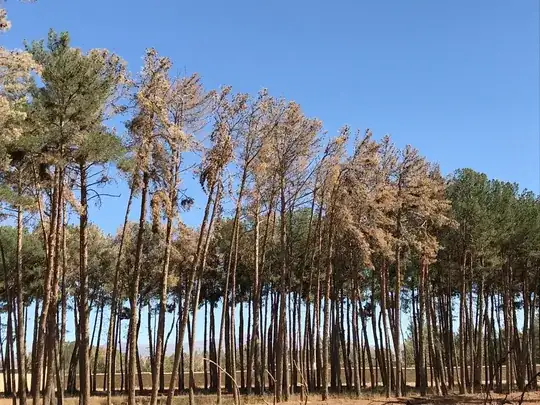In the historic context, while the buildings can be held in a static condition over time, a landscape is dynamic, constantly changing. Considering the existing planting we can be aware that the depth of soil available for trees can vary considerably between locations. During a drought those on thin soil and in competition with close neighbours will suffer more and will often die out, leaving those in deeper soil to survive.
To maintain a visual barrier over time requires planning. One solution might be to have a multi-year long term plan which calls for replacement trees planted alternately every five years or so, with the tallest deliberately removed, along with roots, and small trees replanted, in their turn, to eventually take over as the tallest. If you have some leeway in choice of plant materials, choose those species that fit the plan most effectively.
